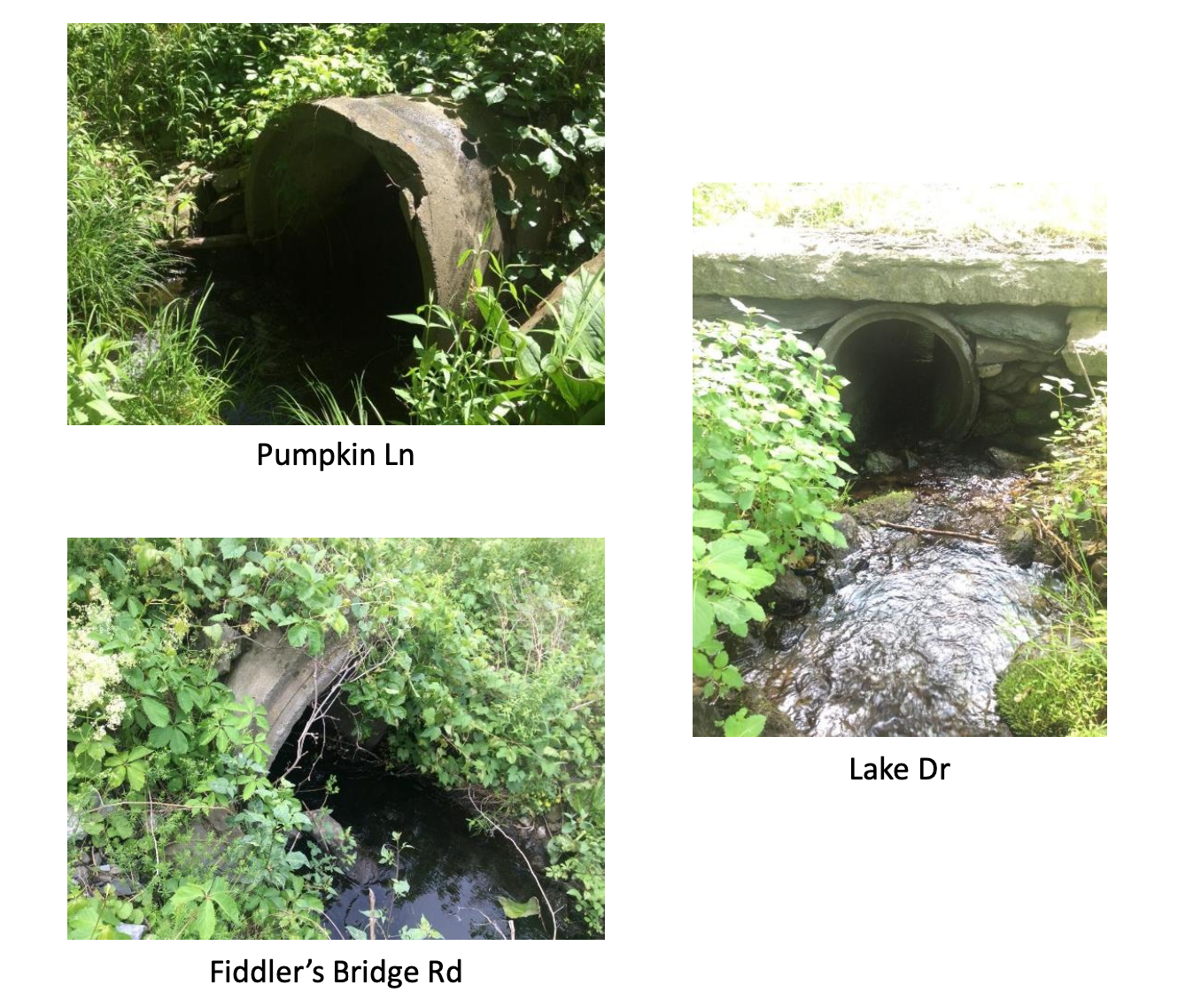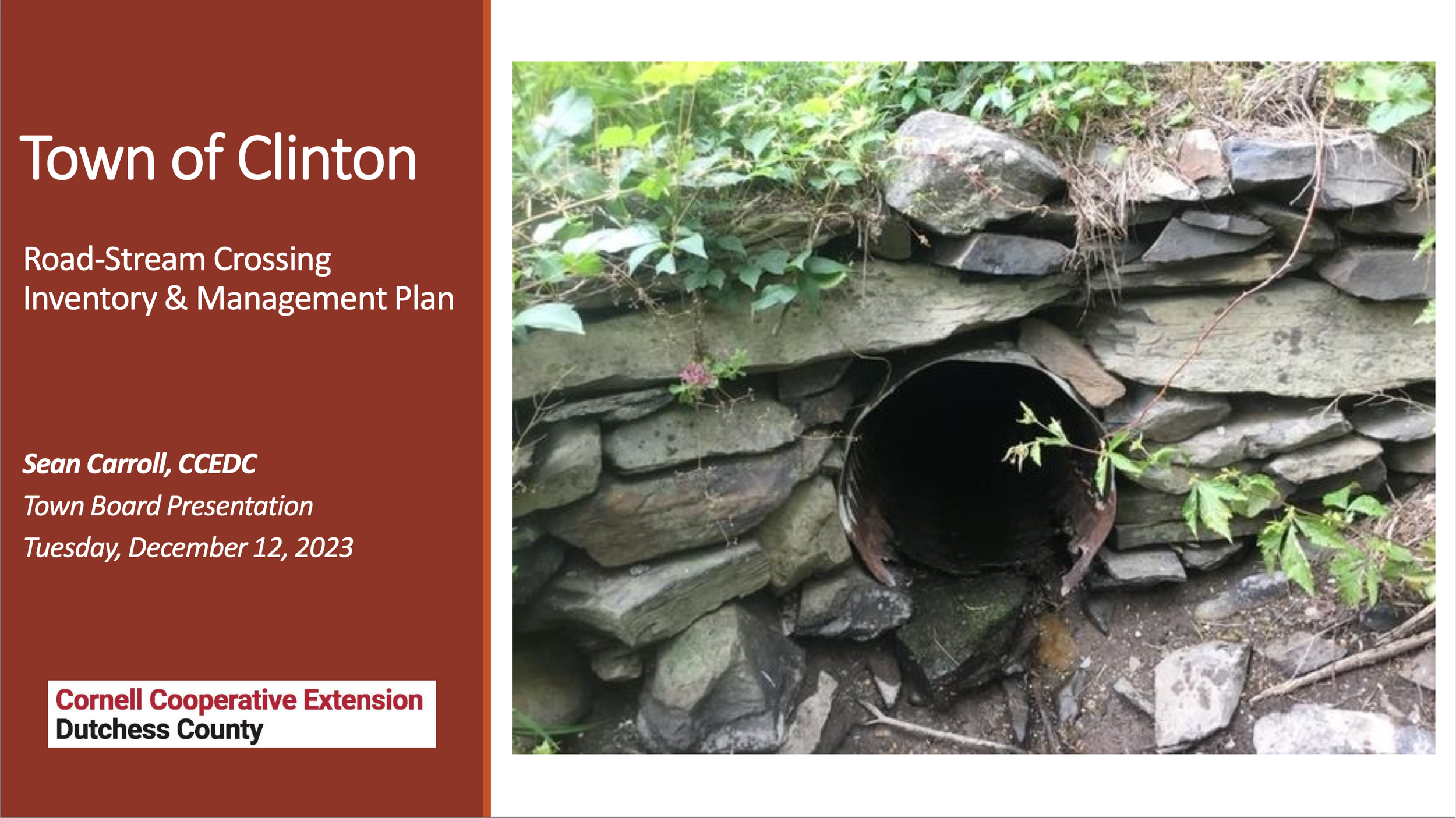Road-Stream Crossings in Clinton
Streams are important and unusually shaped ecosystems. Long and linear, they are typically interrupted by roads or affected by other types of development. To ensure the health of a stream and the fish and wildlife that rely on it (in addition to the general health of the water we all rely on from our wells), bridges and culverts must meet certain criteria.
Undersized crossings, shallow crossings, and crossings in disrepair can interrupt a stream ecosystem as well as require extra maintenance to remove sediment and debris and cause flooding, which might block access for essential or emergency services.
In 2022-23, Cornell Cooperative Extension of Dutchess County worked with the town to develop a Road-Stream Crossing Inventory & Management Plan. An important step in the town’s efforts to be designated a Climate Smart Community, the comprehensive report catalogs the 145 stream crossings in Clinton (116 town-managed crossings, 18 county-managed crossings, and 11 state-managed crossings) and evaluates their condition based on a number of criteria.
Sample page from the Road-Stream Crossing Inventory & Management Plan, which includes information on structure, dimensions, materials, condition, and photos for all the culverts, bridges, and dams within the municipality.
The inventory gives the town solid data on which culverts, bridges, and/or dams need attention, resizing, repair, or replacement, and provides valuable information that will be useful in applying for grants to assist with these repairs.
Sean Carroll, Senior GIS / Environmental Educator at Cornell Cooperative Extension created the plan for the town and delivered the report at a presentation in December of 2023.
Learn more about the importance of stream crossings and management from the New York State Department of Environmental Conservation.
Click here to download the full report.


